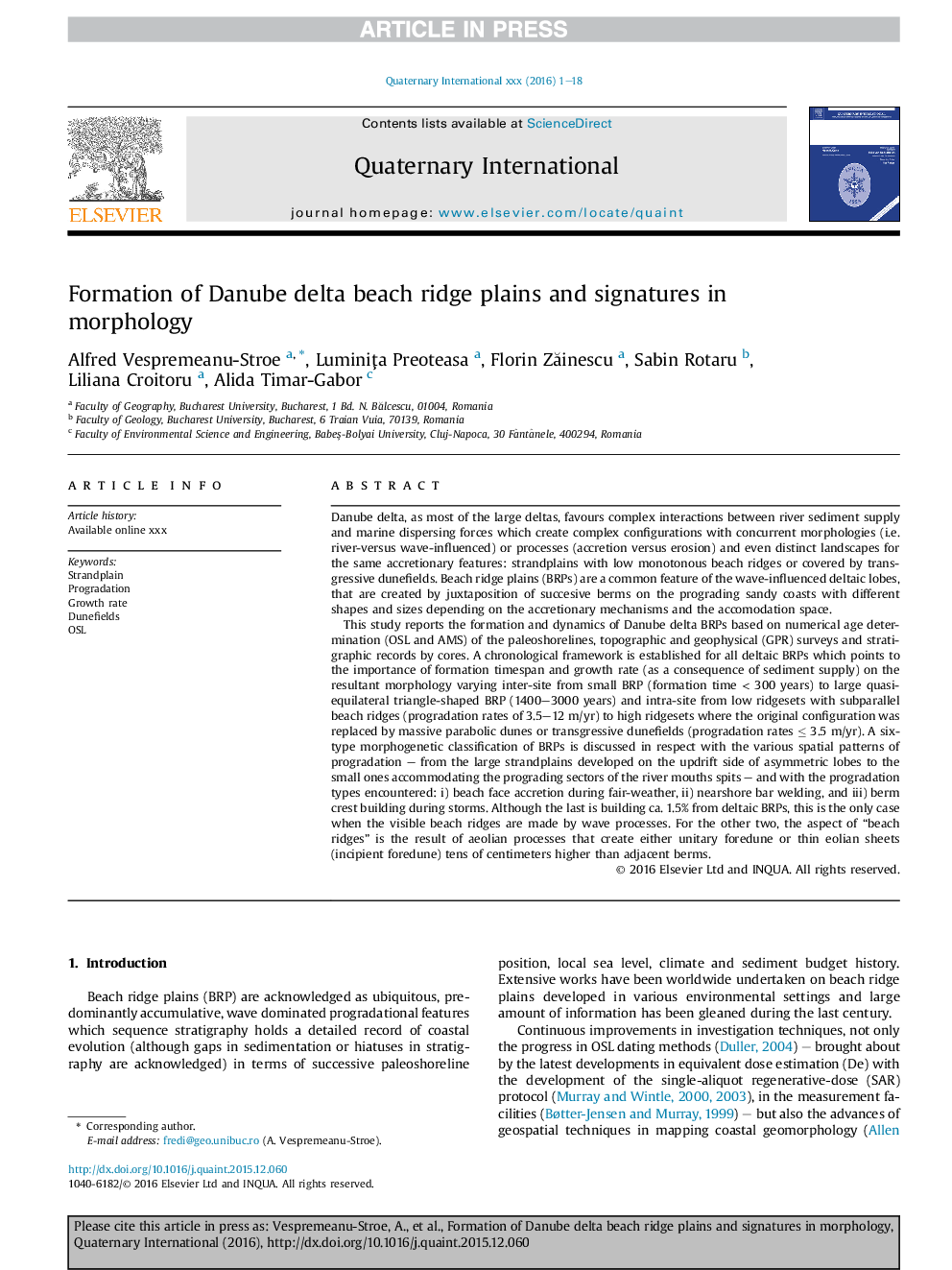| Article ID | Journal | Published Year | Pages | File Type |
|---|---|---|---|---|
| 5114169 | Quaternary International | 2016 | 18 Pages |
Abstract
This study reports the formation and dynamics of Danube delta BRPs based on numerical age determination (OSL and AMS) of the paleoshorelines, topographic and geophysical (GPR) surveys and stratigraphic records by cores. A chronological framework is established for all deltaic BRPs which points to the importance of formation timespan and growth rate (as a consequence of sediment supply) on the resultant morphology varying inter-site from small BRP (formation time < 300 years) to large quasi-equilateral triangle-shaped BRP (1400-3000 years) and intra-site from low ridgesets with subparallel beach ridges (progradation rates of 3.5-12 m/yr) to high ridgesets where the original configuration was replaced by massive parabolic dunes or transgressive dunefields (progradation rates â¤Â 3.5 m/yr). A six-type morphogenetic classification of BRPs is discussed in respect with the various spatial patterns of progradation - from the large strandplains developed on the updrift side of asymmetric lobes to the small ones accommodating the prograding sectors of the river mouths spits - and with the progradation types encountered: i) beach face accretion during fair-weather, ii) nearshore bar welding, and iii) berm crest building during storms. Although the last is building ca. 1.5% from deltaic BRPs, this is the only case when the visible beach ridges are made by wave processes. For the other two, the aspect of “beach ridges” is the result of aeolian processes that create either unitary foredune or thin eolian sheets (incipient foredune) tens of centimeters higher than adjacent berms.
Related Topics
Physical Sciences and Engineering
Earth and Planetary Sciences
Geology
Authors
Alfred Vespremeanu-Stroe, LuminiÅ£a Preoteasa, Florin ZÄinescu, Sabin Rotaru, Liliana Croitoru, Alida Timar-Gabor,
